ATLANTIS

Colorfull vector artwork on the basis of my original drawing.

Colorfull vector artwork on the basis of my original drawing.
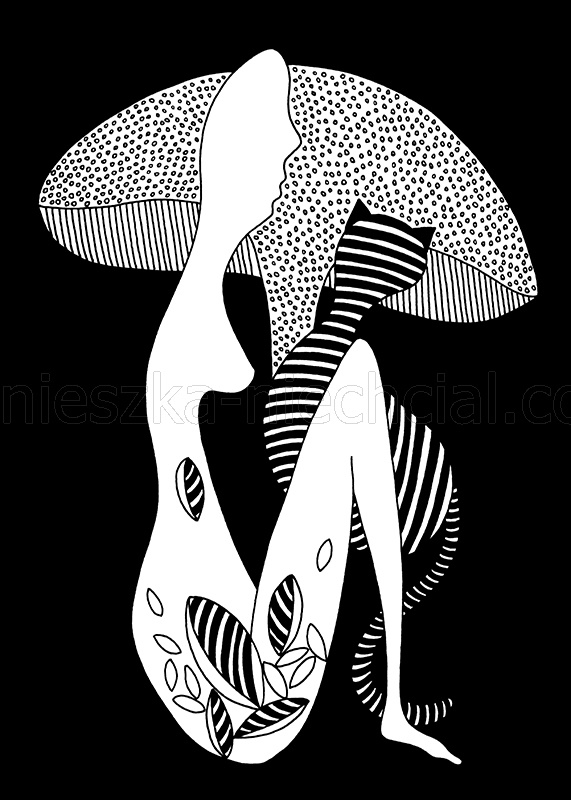
Black and white vector artwork on the basis of my original drawing. Decorative pattern on fabric, wall, wallpaper, t-shirt.

Illustration for kids. Artwork on the basis of my original drawing.
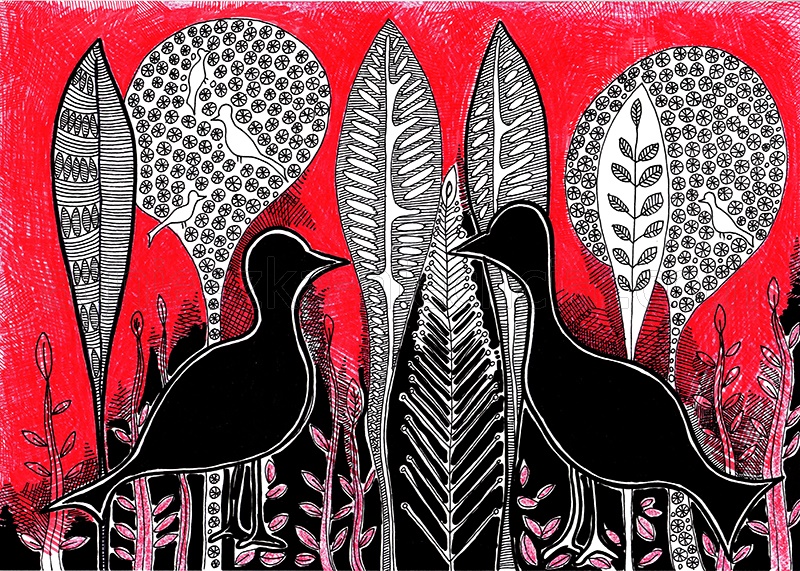
Illustration with red. Artwork on the basis of my original drawing.
Introduction to new fairy tale based on an idea my son.
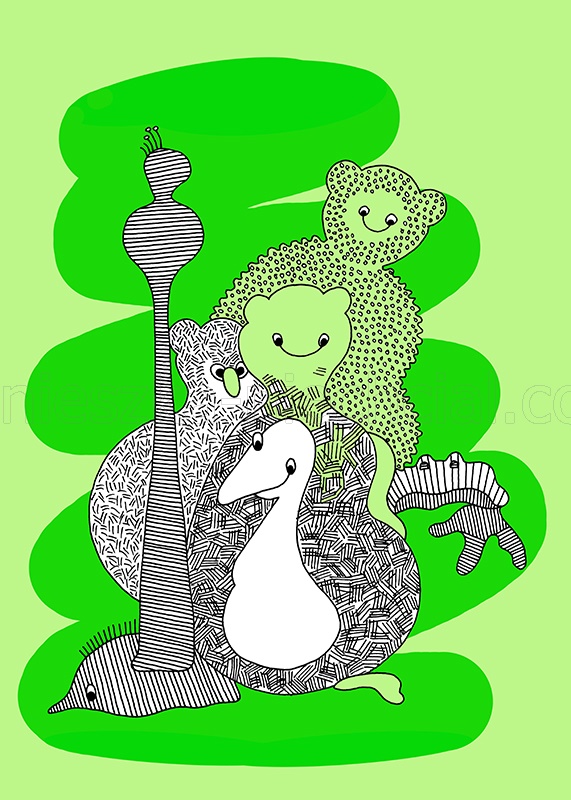
Artwork on the basis of my original drawing.
From the series: Arnold
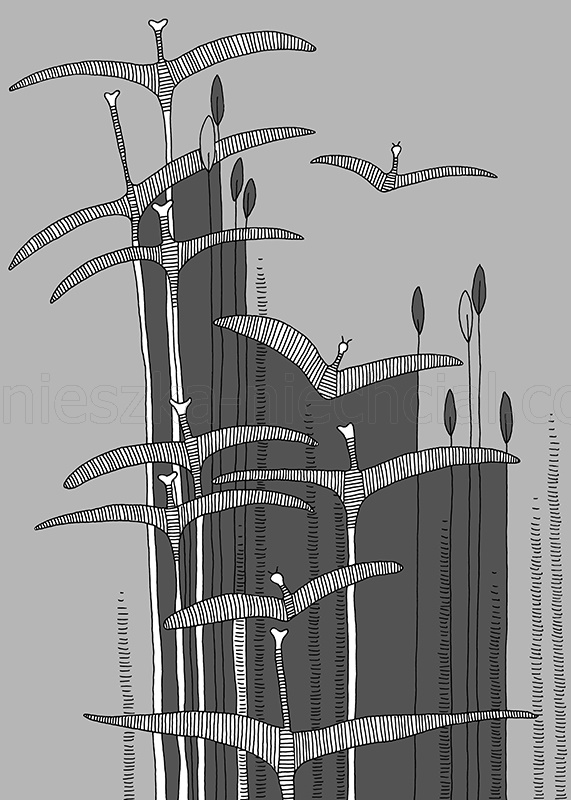
Monochrome graphics. Orginal decorative pattern on the basis of my drawing.
There are colours that give me a headache, colours which for me do not exist. These are all shades of grey and neutral – dark brown, belonging to so-called colours of the earth.
I am able to suffer fatal and absolute negation of the colour, as the need for contrast is built in my comprehension of the world…..but indistinctiveness, melting in and relativity towards the inexplicable I do not understand and I cannot acquire.
And the colours which do not exist are for me like existence without potential. Background paradox. I prefer to lose myself numerously in shades which sparkle then sink in the fog of appearances.
Grey is emptiness, sadness and hopelessness. There is no life, joy or hope in it. And no calmness (paradox again).
Generally, grey from the very beginning has been the colour of common people and peasants who were not allowed to wear colourful clothes. It became the symbol of low social status and, to some extent, barrier for the poor. Today it is also associated with dullness, asceticism, boredom, commonness and even mediocrity.
Something that is grey-dun is colourless, barren, inferior, alike with everything else, common and invisible (hence „a grey eminence” means a person who directs, but is invisible for the others).
Only assigning grey (together with green) to hunters introduced its new meaning – when hunting became popular and even kings were hunters. Then grey and green hunter’s clothes were officially introduced on nobleman’s salons and eagerly worn even by emperors.
I also associate dark brown shades with sorrow, nostalgia and memories (colour connected with grey). Although some see in this colour…. a nice bear, cosy, pleasant, recollected from childhood ….and even sexual connections, from the images of sexual organs through different sexual practices (brown is the combination of mainly red with yellow and black). Known are also numerous examples of bear cult in Europe and Asia where this animal has been regarded as superhuman, often imagined as woman and attributed with magical powers (bear sexual power and virility.)
Similarly other „dark brown” animals like beaver or toad were treated. They had magical spheres of activities – medical and sexual. But the bear as a symbol of male power and virility had special meaning in many nations and the remnants of those influences we can find until now in our everyday life although not always we are aware of them.
In the history of European painting I associate the greys mainly with …..Rococo period.
Dominant here is basic, traditional palette but picture is full of shades powdered and faded…lots of whites, ochres, blacks, blue and carmine but all delicate, chromatic, faded, broken and “colourless”. Despite lightness of the content, form and colour I see here very rigid painting rules and false sensibility of the whole narrative artistry.
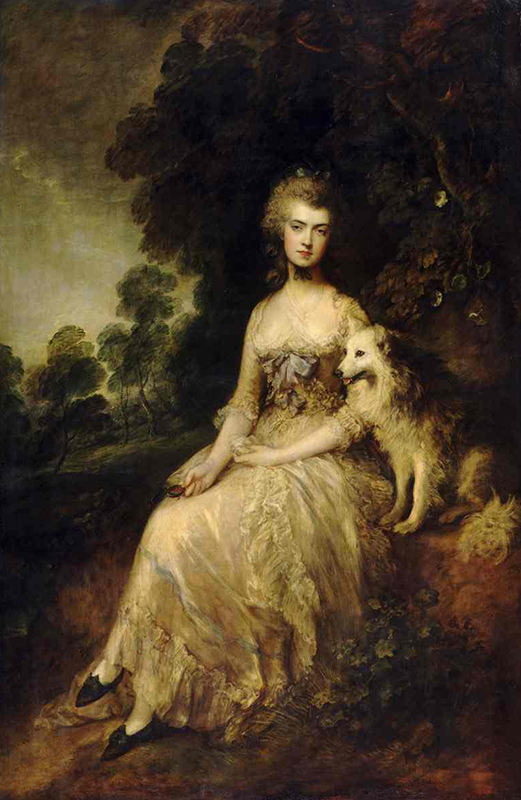
Thomas Gainsborough – Portrait of Mary Robinson
Special example of painting without colour.
– – –
Bibliography:
Maria Rzepińska – Historia koloru
Władysław Kopaliński – Słownik symboli
Rudolf Gross – Dlaczego czerwień jest barwą miłości
Aleksander Wojciechowski – Z dziejów malarstwa pejzażowego
Violet is wonderful!
The mere ambiguity in the secret it releases is indescribable. Violet teases my being in a very positive way that’s why I like to have it close to me. It’s at the same time distressing, unbridled, calm and dreamy.
Violet is the synonym of secret, magic, power and exaltation. And what’s most important – violet is rebellious and independent!
However in Christian tradition this colour symbolizes penance.
In the history of humanity violet
has often been treated “interchangeably” with black as a colour of mourning. This phenomenon has been especially seen where black has been rejected due to its too negative connotations or as equivalent of extraordinary events ( for example veils of widows getting married again were violet, not black ).
Exceptional prestige among colours gained crimson – connection of red with violet.
Since antiquity crimson dye, made of little Mediterranean snail secretion has been highly esteemed. Kings and magnates wore crimson robes probably because the dye was extremely expensive and the colour could rarely be found in nature.
„To put on crimson” meant to become a king or a cardinal. For this reason until now this colour symbolizes authority, splendour, divinity. Combining crimson and gold we mean luxury, power and wealth. And adding violet to gold – victory, triumph and rising.
In a European painting the colour violet has been rarely used so its role was marginal. Such situation was probably caused by lack of access to dye of proper quality. The only one known since the Middle Ages, very short-lasting and natural violet dye, was folium, the juice from plants. However it did not have adequate distinctness. Violet in the past has been obtained mainly from mixture of cool red with blue. But “non-existence” of violet took place also in Sixth and XX th century when the era of chemically produced paints came which is quite an ordinary phenomenon.
From contemporary known artists only 2 great colourists often used violet as a colour which is beautiful, intensive and pure: Pierre Bonnard and Henri Matisse. And for this I hold them in high esteem.
Now this colour is much more appreciated and liberated, which pleases the eye and mind :)

Pierre Bonnard – The terrace at Vernonnet
Virtuosity of colours and sounds with addition of warm and cool violet.
Czarny jest kością wnętrza.
Kojarzony z całą soczystością wyrazu: ziemia – jest potężną mocą, wchłaniającą każdą inną barwę. Nic nie może opuścić głębi tego koloru. To jedyne bezwzględne istnienie, które niweczy wszystkie inne barwy.
Traktowany oschle i dostojnie, smutno i żałobnie, a czasem łączony z weselem – dla mnie jest ciepłem istnienia, głębokim, choć stłumionym, żarem obecności.
Czarny kolor jest niebiezpieczny dla psychiki człowieka z jednego zasadniczego powodu: brakuje w nim światła (barwy). Nasze wyobrażenia stworzeń wszelakich potrzebują światła / słońca, aby żyć. Gdy go brakuje, nastaje śmierć. Więc czerń jest śmiercią – defintywnym zejściem pod ziemię, w jaskinie, tunele i studnie. Tutaj, słowo “pod” ma znaczenie symboliczne, gdzie każde “widzenie”, łącznie ze światłem – znika. I nigdy już się stąd nie wydostanie.
Czerń w potocznym i symbolicznym rozumieniu jest śmiercią, rozpaczą, udręką, smutkiem, zmarnowaną szansą, beznadzieją, samotnością, złem, chorobą, lękiem, diabłem, grzechem, czarną magią, absolutem i nicością.
W przedchrześcijańskich zwyczajach na wielu terenach Europy, zmarłym przy pochówku urządzano obfite uczty, gdzie biesiadowano z przyjemnością, nierzadko organizując jeszcze dodatkowo turnieje na ich cześć, a nawet walki. Barwami charakterystycznymi dla obrządków ku czci zmarłych i ich “magicznym powrotom” była, w różnych okresach, czerwień, biel i czerń. Ta ostatnia została barwą żałobną w naszym kręgu kulturowym do dziś.
Czarne były zwierzęta, towarzyszące bogom podziemia i walki oraz kojarzące się z walką i śmiercią (kruk, orzeł, smok, lew, wilk).
Często w legendach słyszy się jeszcze o czarnych postaciach na koniu, jako symbolu istot przybyłych z zaświatów (też: śmierć, cierpienie i pokuta). Co znamienne, funkcjonują jednocześnie białe zjawy, które przypisane są jednak najczęściej kobietom i dzieciom.
Czarne jest również złe. Więc podobna sylwetka jeźdźca (rycerz / wojownik) na koniu symbolizuje również zło, podobnie jak przysłowiowa czarna wołga, wiedźma obleczona w czarne szaty i diabeł.
Czarny jest kolorem “poza prawem”, gdzie czarne i złe staje się to, co jest nielegalne, wykonywane poza ustanowionymi przepisami. Czarna jest podłość, hańba, makabra, negacja, wszystko to, co ma skojarzenia ujemne. Przyczerniane są twarze lub maski mężczyzn, nieprzyporządkowanych oficjalnej władzy, aby nie można było ich rozpoznać. Takie też bywały twarze żałobników. Miały je uchronić przed zawiścią zmarłych.
Jednocześnie bardzo znany jest pradawny kult licznych czarnych bogiń matek oraz bogiń dziewic, skojarzony dziś oczywiście z chrześcijaństwem w Czarnej Madonnie, a dawniej w postaciach Kali, Izydy, Artemidy. Kult ten obfituje głównie w symbole piękna, miłości, matki i bezinteresownej miłości macierzyńskiej.
Czerń jest barwą dopełnienia i kontrastu.
Tak, jak biel jest barwą czystości i niewinności – czerń jest złem i egoizmem. Biel jest światłem – czerń jest ciemnością.
I w takim właśnie znaczeniu te dwie barwy, nierozłączne w swoim symbolicznym znaczeniu, trwały przez wiele setek lat w warsztacie artystów, zajmujących się kolorem.

Francisco de Goya – Sabat czarownic
Człowiek ma w sobie tyle samo zła, co dobra…

Vector artwork. Decorative pattern for you.